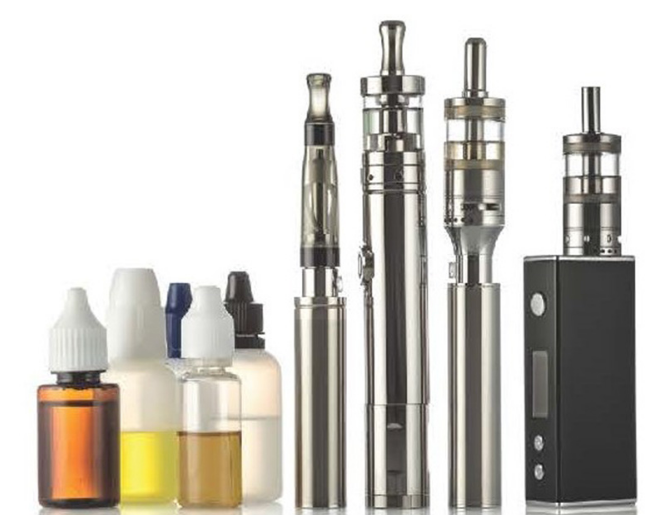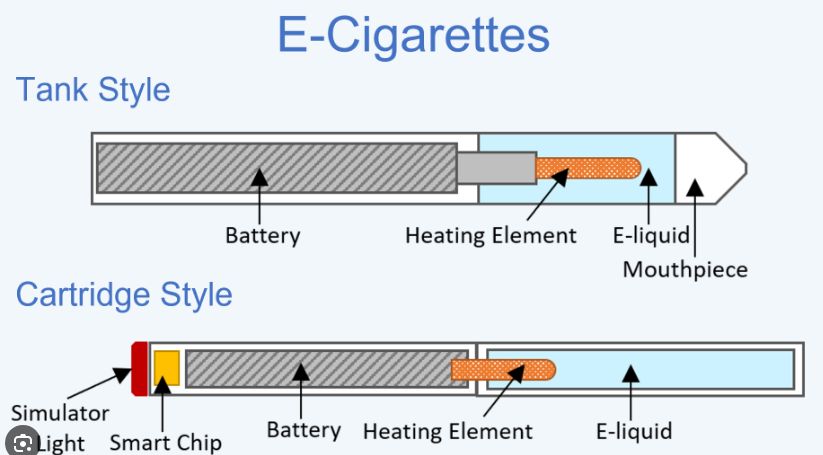E-cigarettes can be heated using conduction, convection, or induction methods, each with distinct advantages and disadvantages.
Conduction Heating in E-cigarettes
Mechanism of Conduction Heating
Conduction heating in e-cigarettes involves direct contact between the heating element and the e-liquid. The heating coil, typically made of materials like Kanthal or stainless steel, heats up when electricity is applied. This heat is then transferred directly to the e-liquid, turning it into vapor.
Advantages of Conduction Heating
- Quick Heating Time: Conduction heating can quickly reach the desired temperature, typically within a few seconds, providing an almost instant vaping experience.
- Simplicity: This method is straightforward and easy to implement, making it a common choice in many entry-level e-cigarettes.
- Cost-Effective: The simplicity of the design often leads to lower manufacturing costs, resulting in more affordable devices for consumers.
Disadvantages of Conduction Heating
- Uneven Heating: Direct contact can result in hot spots, leading to uneven heating of the e-liquid. This can cause a burnt taste and reduce the overall quality of the vapor.
- Risk of Dry Hits: If the e-liquid is not supplied to the coil at a sufficient rate, it can dry out, leading to unpleasant dry hits.
- Maintenance: The direct contact between the coil and e-liquid can lead to residue buildup, requiring more frequent cleaning and coil replacement compared to other heating methods.
Comparison with Other Heating Methods
When compared to convection and induction heating, conduction heating stands out for its rapid heat-up time and cost efficiency. However, it falls short in terms of vapor consistency and maintenance requirements. Convection heating, while slower to heat, provides more even heating and better flavor, while induction heating offers precise temperature control and longer coil life, but at a higher cost.
In summary, conduction heating in e-cigarettes offers a balance between speed and cost, making it a popular choice for many users. However, those seeking a higher quality vaping experience may opt for devices that utilize convection or induction heating.

Convection Heating in E-cigarettes
Mechanism of Convection Heating
Convection heating in e-cigarettes works by passing heated air through the e-liquid, causing it to vaporize. The air is heated by a ceramic or metal element, and then a fan or inhalation action propels the hot air through the chamber containing the e-liquid. This method ensures that the heat is distributed evenly and does not come into direct contact with the liquid.
Advantages of Convection Heating
- Even Heating: Convection heating provides uniform heat distribution, reducing the risk of hot spots and ensuring consistent vapor quality.
- Better Flavor: Since the e-liquid is heated more evenly, convection heating tends to produce a purer and more flavorful vapor compared to conduction heating.
- Reduced Risk of Dry Hits: The even distribution of heat minimizes the chances of dry hits, a common issue with conduction heating.
- Efficiency: Convection heating is generally more efficient, as it heats the e-liquid more evenly, resulting in better vapor production and less waste.
Disadvantages of Convection Heating
- Longer Heat-up Time: Convection heaters typically take longer to reach the desired temperature compared to conduction heaters, which may not be ideal for users looking for a quick vaping experience.
- Higher Cost: The complexity of convection heating systems often results in higher manufacturing costs, making convection-based e-cigarettes more expensive than their conduction counterparts.
- Maintenance: While convection heating reduces residue buildup, the intricate design of the heating system can make cleaning and maintenance more challenging.
Induction Heating in E-cigarettes
Mechanism of Induction Heating
Induction heating in e-cigarettes uses electromagnetic fields to heat the e-liquid. A coil of wire, usually made of copper, creates a magnetic field when an electric current passes through it. This magnetic field induces an electric current in the heating element, which in turn produces heat. The heat is then transferred to the e-liquid, vaporizing it without direct contact.
Advantages of Induction Heating
- Even Heating: Induction heating provides uniform heat distribution, ensuring consistent vapor quality without hot spots.
- Fast Heat-up Time: Induction heating systems can reach the desired temperature quickly, providing a rapid vaping experience.
- Longer Lifespan: Since there is no direct contact between the heating element and the e-liquid, there is less residue buildup, leading to a longer lifespan for the heating element.
- Precise Temperature Control: Induction heating allows for precise control over the temperature, enabling users to customize their vaping experience.
Disadvantages of Induction Heating
- Higher Cost: The technology behind induction heating is more complex, resulting in higher manufacturing costs and, consequently, more expensive e-cigarettes.
- Energy Consumption: Induction heating can consume more energy compared to other heating methods, which may impact battery life in portable devices.
- Limited Compatibility: Not all e-liquids and tanks are compatible with induction heating, which may limit user choices.
Comparison with Other Heating Methods
Induction heating offers a unique blend of fast heat-up time, even heating, and precise temperature control, setting it apart from conduction and convection heating. While conduction heating provides a quicker and more affordable option, it lacks the consistency and quality of induction heating. Convection heating, on the other hand, offers even heating and better flavor, but typically at a slower rate and higher cost. Induction heating strikes a balance between speed, quality, and control, making it an attractive option for users seeking a premium vaping experience.

Comparison of Heating Methods
Efficiency and Performance
When comparing the efficiency and performance of different heating methods in e-cigarettes, several factors come into play. Conduction heating is known for its quick heat-up time, often taking just a few seconds to reach the desired temperature. However, it can be less efficient in terms of energy use and may result in uneven heating.
Convection heating, on the other hand, provides more even heat distribution, which can enhance the efficiency of vapor production. Although it has a slower heat-up time, the quality of the vapor is generally higher.
Induction heating combines the best of both worlds, offering fast heat-up times and even heating. It is highly efficient in terms of energy use, with some models reaching the desired temperature in under 10 seconds. The precise temperature control also contributes to its overall performance, making it a preferred method for many users.
Impact on Flavor and Vapor Quality
The heating method has a significant impact on the flavor and vapor quality of e-cigarettes. Conduction heating can sometimes lead to a burnt taste due to hot spots, which can degrade the flavor. In contrast, convection heating provides a smoother and more consistent flavor profile, as the even heating prevents the e-liquid from overheating.
Induction heating is known for its ability to produce a clean and pure vapor, as there is no direct contact between the heating element and the e-liquid. This results in a superior flavor experience and a smoother vapor.
In summary, while conduction heating offers speed and affordability, it may compromise on flavor and vapor quality. Convection heating improves flavor and vapor quality but can be slower and more expensive. Induction heating provides a balance of fast heat-up time, even heating, and excellent flavor, making it a popular choice for those seeking a high-quality vaping experience.